Albuquerque, NM Pollen and Allergy Report for Summer 2023
Pollen Allergy Trends in Albuquerque, NM
When is pollen lowest in Albuquerque, NM?

February
Lowest month total PPM
Avg. PPM
When is pollen highest in Albuquerque, NM?

March
Highest month total PPM
Avg. PPM
How does pollen in Albuquerque, NM compare to New Mexico?
Albuquerque has a higher average PPM than the state of New Mexico.
Albuquerque yearly avg PPM:
New Mexico yearly avg PPM:
How does pollen in Albuquerque, NM compare to the USA?
Albuquerque has a lower average PPM than the USA.
Albuquerque yearly avg PPM:
USA yearly avg PPM:
Is pollen worse this year in Albuquerque, NM?
Spring 2023 was better than spring 2022.
Spring 2023 PPM:
Spring 2022 PPM:
Average PPM in Albuquerque, NM
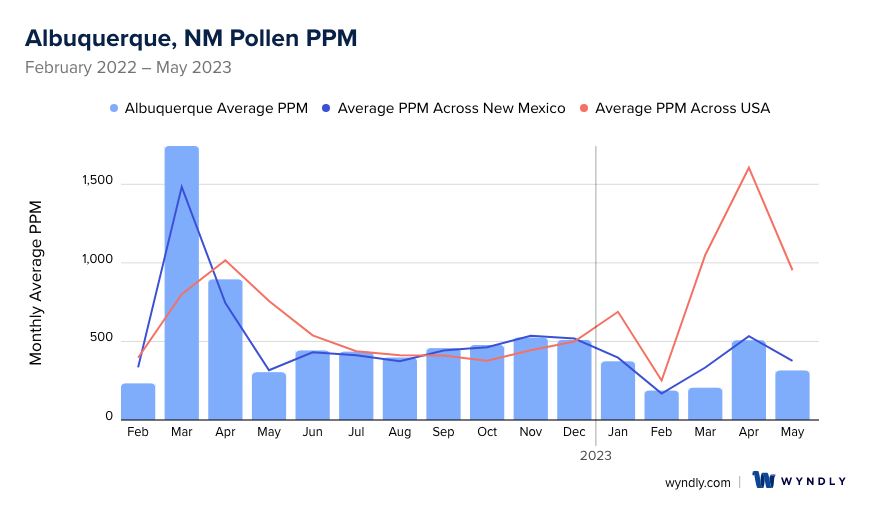
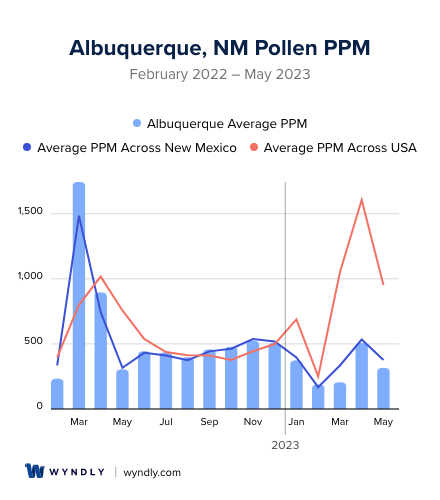
Albuquerque, NM Pollen and Allergy Breakdown by Month
Grass
When is grass pollen highest in Albuquerque, NM?
May has the highest grass pollen in Albuquerque, NM with an average PPM of
When is grass pollen lowest in Albuquerque, NM?
April has the lowest grass pollen in Albuquerque, NM with an average PPM of
Tree
When is tree pollen highest in Albuquerque, NM?
March has the highest tree pollen in Albuquerque, NM with an average PPM of
When is tree pollen lowest in Albuquerque, NM?
December has the lowest tree pollen in Albuquerque, NM with an average PPM of
Weed
When is weed pollen highest in Albuquerque, NM?
November has the highest weed pollen in Albuquerque, NM with an average PPM of
When is weed pollen lowest in Albuquerque, NM?
February has the lowest weed pollen in Albuquerque, NM with an average PPM of
Albuquerque, NM Pollen Monthly Breakdown by Pollen Type
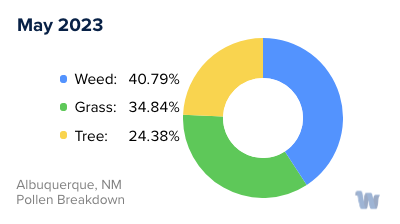


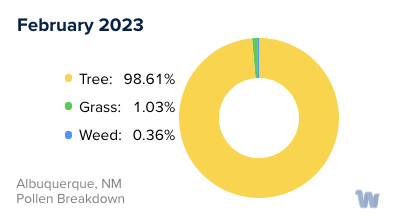
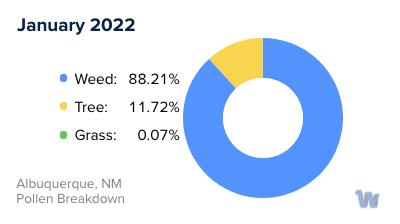
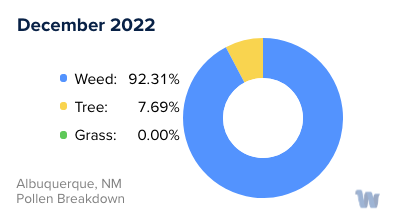

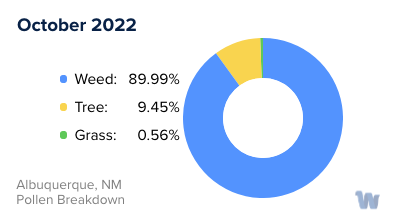
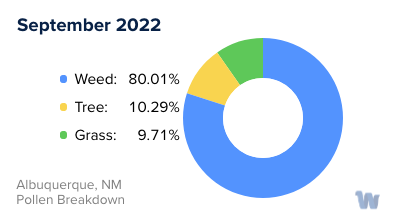
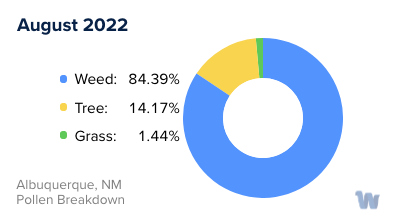
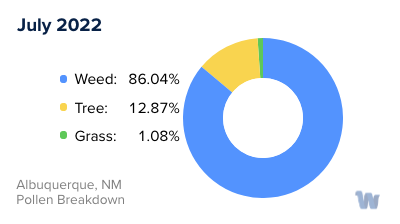

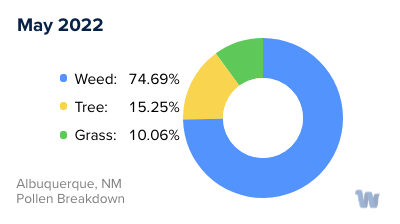



Pollen and Hay Fever in Albuquerque, NM
Pollen allergies and hay fever are significant health concerns for residents of Albuquerque, New Mexico, with particular plants contributing to airborne pollen throughout the year. The primary pollen producers in the region are juniper, cedar, elm, willow, poplar (including Aspen and Cottonwoods), mulberry, and sage, each blooming in different seasons.
Elm typically blooms first in the year, followed by juniper, and then ash. As the weather warms, mulberry appears. Known as a prolific pollen producer, mulberry is often the pollen seen the most during its season. In spring, weed-like chenopods (goosefeet) bloom alongside sage and other native desert plants.
Tree pollen is prevalent, with high levels recorded in the spring. However, grass pollen, noted for its very high concentration levels, is a year-round concern, with peaks during the warmer months. In contrast, ragweed pollen presents in low quantities, reflecting its less significant role in allergenic responses in this region.
Pollen in Albuquerque is not just a seasonal occurrence but is affected by several factors, including weather conditions. Rain can limit the travel of airborne pollen, keeping it close to the plant. Hence, the amount of rain during the monsoon season can influence the pollen count. While monsoon rain can "knock the pollen out of the atmosphere," it may stimulate other weeds and shrubs to produce more pollen.
Overall, dry, hot springs, and summers tend to bring higher pollen counts. Therefore, for those susceptible to hay fever, understanding these patterns and the types of pollen predominant in each season can be crucial for managing their allergic responses. This knowledge helps residents prepare and adapt to the dynamic pollen landscape of Albuquerque, New Mexico.


